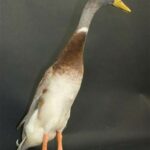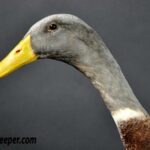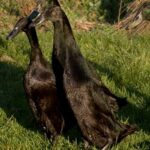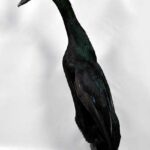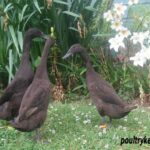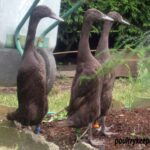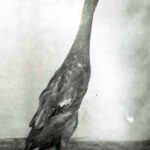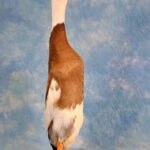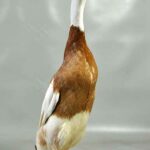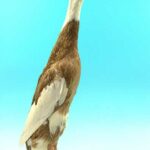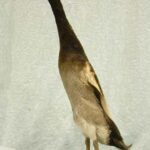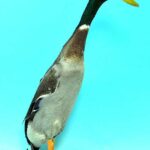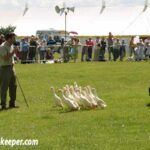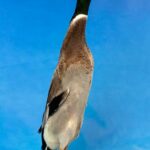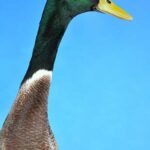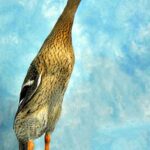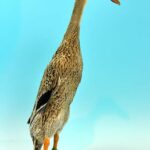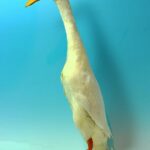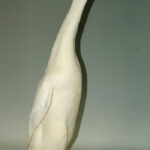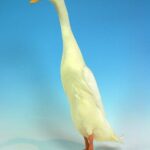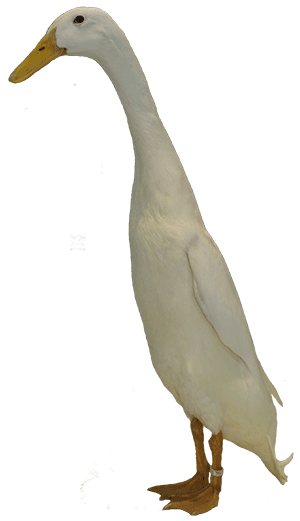
Uses: Utility – Eggs and good for organic pest control, particularly in vineyards.
Eggs: Up to 200 eggs per year.
Origin: East Indies.
Weight: Drake: 1.6 – 2.3 Kg, Duck: 1.4 – 2 Kg.
Classification: Runner.
Colours: Apricot Trout (Saxony), Black, Blue, Chocolate, Fawn, Fawn & White, Mallard, Silver, Trout, White.
Useful to Know: Indian Runners do not originate from India but the East Indies – Malaya, Java and Lombok. They are prolific egg layers that are happier spending most of their time foraging for food than being on water. Probably THE most popular duck that can be found in a multitude of colour varieties.
Indian Runner ducks are possibly the most influential of all of the duck breeds. Many of today’s breeds of light duck have in part been created from the Indian Runner Duck. The Welsh Harlequin, Abacot Ranger and the famous Khaki Campbell for example would not exist if it were not for the Indian Runner.
The Indian Runner is reported to have first appeared in the UK in 1835 and they were originally called Penguin Ducks. The first fawn and white runners were standardised in 1901 with other colours following (see colour varieties below).
Indian Runners are active ducks that enjoy foraging for slugs and insects. One of their original uses in Asia was to clear the paddy fields of pests. They would be driven there in the mornings and rounded up again at night so that they could be kept safe from predators over night. Of course, they are well equipped to cover the distance quickly being able to run at a reasonable pace. In some parts of the World, they are still used in this way. Some organic vineyards in South Africa are starting to use Indian Runner Ducks to clear the vines of pests to avoid the use of chemicals.
Colour Varieties
There are a number of different colour varieties of Indian Runner duck available but the Standards do vary by region. In America there have been 8 colour varieties admitted to the American Standard of Perfection whilst in the UK, the British Waterfowl Standard has 14.
[one_half][callout style=”lightblue” title=”British Waterfowl Standards 2008″ centertitle=”false” align=”left” width=”100%”]There are 14 colour varieties. The Fawn & White was admitted in 1901. The White and the Fawn in 1922, the Black and the Chocolate in 1930, the Mallard, Trout and Cumberland Blue in 1982. Finally, the Apricot Dusky, Blue Dusky, Apricot Trout, Blue Trout and Silver were admitted in 2008.[/callout][/one_half]
[one_half last] [callout style=”darkblue” title=”American Standard of Perfection 2010″ centertitle=”false” align=”right” width=”100%”]The American Standard has 8 colour varieties listed. The Fawn & White was admitted first in 1898 with the White and the Pencilled varieties following in 1914. Finally, the Black, Buff, Chocolate, Cumberland Blue and Gray varieties were all admitted to the Standard in 1977. [/callout][/one_half]
[clear]
Photos
Books
The following books are available. Links take you to the Amazon or other sellers’ pages for the books.
- The Indian Runner Duck – Mike Ashton
- The Domestic Duck – C & M Ashton – P.36
- British Waterfowl Standards 2008 – P.92
- British Poultry Standards 2008 – P.419
Breed Clubs
Discussion
- Looking for stock? Visit the Waterfowl Section of our Forum
- Please leave a comment below if you can provide further information or have a question about this breed.

